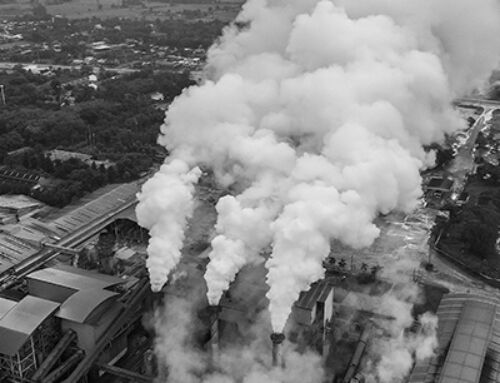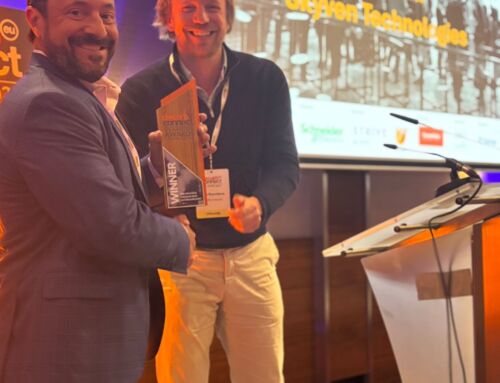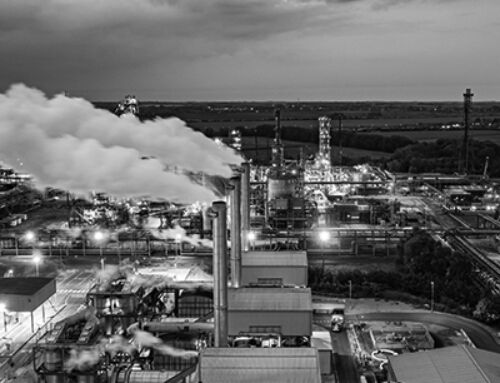Industrial heat pump technology is on the rise across the globe, and for good reason: deployment of industrial heat pumps has the potential to decrease annual CO2 emissions by over 300 million metric tons annually. High-temperature heat pumps electrify industrial steam production, significantly reducing Scope 1 emissions at manufacturing facilities at costs competitive with existing natural gas or electric boilers.
However, the rising popularity of heat pumps brings increased conversation about the environmental impacts of the refrigerants used in existing heat pump technologies. Commitments and regulations to curb harmful “F-gas” refrigerants (HFCs, HCFCs, and HFOs) are already leading to a high demand for alternative natural refrigerants like water.
Increased regulations surrounding refrigerants
The EPA recently released a key regulation that will restrict the usage of hydrofluorocarbons (HFCs), a common refrigerant in heat pump products, by 2030. Starting in 2025, heat pumps will be required to use more environmentally friendly refrigerants with a global warming potential (GWP) under 700. This regulation follows in the footsteps of legislation by the EU, which restricts the use of both HFCs and HFOs in heat pump applications. It is expected that refrigerant regulations in the US will continue to tighten as the US moves towards its goal of a net-zero emissions economy by 2050, leading to the demand for heat pumps that operate using low-GWP refrigerants.
Understanding the environmental impacts of HFCs and HFOs
The environmental effects of refrigerants are compared using a metric called Global Warming Potential (GWP), which measures the relative climate impact of a greenhouse gas (GHG). Specifically, GWP measures the amount of energy that the emissions from 1 ton of refrigerant will absorb over a given period of time, relative to 1 ton of CO2. Larger GWPs mean that more energy is absorbed by the refrigerant, contributing more to global warming and leading to the regulatory requirements described above.
HFCs, which often have GWPs of more than 1000, are significant contributors to global warming. Although HFOs typically have lower GWPs than HFCs, their environmental impact lasts far beyond their GWP. It has been shown that HFOs degrade at high temperatures to produce “forever chemicals” like PFAS, which linger in water supplies and cause myriad health concerns. Additionally, recent research shows that HFOs may react with atmospheric ozone to create long-lasting GHGs with GWPs of nearly 15,000. Increasing concerns and regulations surrounding health and environmental hazards are expected to result in even more stringent regulations surrounding refrigerant usage.

The need for low-GWP refrigerants
Low-GWP natural refrigerants have risen in popularity as alternatives to high-GWP F-gas refrigerants. In addition to GWP and regulatory requirements, it is also important to consider factors like flammability, cost, toxicity, and heating capacity when choosing a refrigerant for use in industrial heat pump applications.

Of the refrigerants described above, water is highly attractive because it is zero GWP, low-cost, non-toxic, non-flammable, and can be used to generate steam. However, water has a high boiling point at atmospheric pressure, meaning that it must be subjected to a high vacuum to boil at the lower temperatures required for industrial applications. Since the vapor density of water decreases under vacuum, this means that physically large compressors are required to generate steam.
Typically, these large compressors are part of open-cycle mechanical vapor recompression (MVR) systems. MVR systems capture low-temperature heat or steam from industrial processes, then increase the pressure and temperature of that steam using large mechanical turbofan compressors to reuse the steam for process heating. Open-cycle MVR systems have been in use for decades to provide steam for process-specific applications, like dairy evaporators.
However, it can be difficult to integrate large, custom-built MVR systems into industrial facilities that do not have an excess of space in or adjacent to the plant. This drives the need for an industrial heat pump technology that uses MVR compressors, yet can be decoupled from the manufacturing process.
Skyven Arcturus: Harnessing the power of water
To address this challenge, Skyven has developed the Skyven Arcturus line of steam-generating heat pumps, which are built on a train of open-cycle MVR turbofans. Unlike other open-cycle MVR systems, which have historically required custom engineering for integration into manufacturing facilities, Arcturus is designed using a replicable building block approach that removes the need for extensive custom engineering at each industrial facility. To compress steam to higher temperatures and pressures, more MVR turbofans can simply be added to the train. Additionally, Arcturus is an external retrofit that operates outside of a facility’s existing manufacturing processes, integrating into the facility at only the heat source and the steam header.
Arcturus uses 0 GWP water as both a refrigerant and a working fluid to produce boiler-quality steam at temperatures up to 420°F, pressures up to 300 psig, and temperature lifts up to 330°F. Arcturus provides boiler-quality steam without regulatory, toxicity, or operational concerns, and does so at the highest coefficient of performance (COP) and temperature lift of any industrial heat pump currently on the market.
Ready to decarbonize your facility?
If you are ready to decarbonize your industrial facility and want to learn more about cutting-edge technologies like Skyven Arcturus that use 0 GWP water as a refrigerant, we’d love to have a conversation.
Skyven is an Energy-as-a-Service provider that delivers clean process heat to industrial facilities at prices lower than natural gas. We do this by identifying, funding, and building decarbonization solutions at your facility, then maintaining them for the life of our contract.
Learn more about the Skyven process here, or reach out to sales@skyven.co to get in touch.





